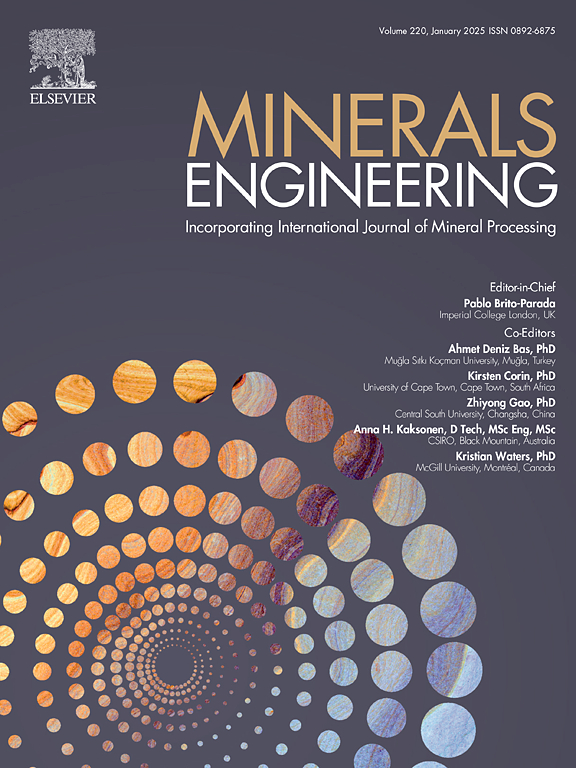Particle motion characteristics on the bubble surface with mobile boundary in flow conditions
IF 4.9
2区 工程技术
Q1 ENGINEERING, CHEMICAL
引用次数: 0
Abstract
Mineral flotation corresponds to a separation process accompanied by fluid flow, where bubbles are taken as a carrier dropping particles to the fluid surface. Considering that the particle motion is strongly affected by flow conditions, the microscopic interaction behavior between the bubbles and particles should be changed accordingly. In this study, CFD numerical simulation is initially conducted to obtain the fluid velocity distribution within the near-surface region of an air bubble under the conditions of different countercurrent flow rates. Additionally, the influence of fluid flow on particle kinetics and subsequent particle-bubble interaction is obtained based on the analysis of recorded images by a high-speed camera. Results show that when the flow approaches the bubble, there is a transition of flow direction from the axial to the side, evidenced by the flow around bubble surfaces. As such, the increased countercurrent flow rates can drive particles away from the bubble more rapidly, which is not conducive to the particle-bubble collision and attachment probability. Such two findings can be attributed to the increased hydrodynamic drag force weakening the radial particle motion and the limited contact time provided for liquid film drainage, respectively. The research outcome is expected to provide significant references for the design of flow environment in mineral flotation.

求助全文
约1分钟内获得全文
求助全文
来源期刊

Minerals Engineering
工程技术-工程:化工
CiteScore
8.70
自引率
18.80%
发文量
519
审稿时长
81 days
期刊介绍:
The purpose of the journal is to provide for the rapid publication of topical papers featuring the latest developments in the allied fields of mineral processing and extractive metallurgy. Its wide ranging coverage of research and practical (operating) topics includes physical separation methods, such as comminution, flotation concentration and dewatering, chemical methods such as bio-, hydro-, and electro-metallurgy, analytical techniques, process control, simulation and instrumentation, and mineralogical aspects of processing. Environmental issues, particularly those pertaining to sustainable development, will also be strongly covered.
 求助内容:
求助内容: 应助结果提醒方式:
应助结果提醒方式:


